When Pulp Fiction debuted in 1994, writer-director Quentin Tarantino was hailed as a filmmaking genius, and his movie rewired filmmakers’ brains for the next 20 years.
The film earned tons of buzz for a number of valid reasons:
- its unexpected revival of John Travolta’s career
- its profanity-fueled pop culture dialogue
- its gratuitous narrative shocks
- its glorification and humanizing of nefarious characters who would have been drawn as one-dimensional villains in lesser films.
Pulp Fiction was a jolt of adrenaline for indie filmmaking, and even the normally stodgy gatekeepers of the Oscars recognized its impact: Pulp Fiction was nominated for seven Academy Awards in 1995, and Tarantino won its sole Oscar for Best Original Screenplay.
But as inventive as his dialogue and characterizations were, the main reason everyone was talking about Pulp Fiction was its time-shifted plot structure. (Tarantino’s previous film, Reservoir Dogs, also did the same thing, but with less buzz.)
Yet if violating film’s typical three-act structure by chopping up time was the only thing Tarantino did, his movies would just be an exercise in film form, and nobody other than film geeks would have noticed.
The real reason Tarantino’s scene-shifting style works so well isn’t just because he’s rearranging the order of the narrative. It’s because Tarantino reorganizes Pulp Fiction’s narrative into the order that maximizes our emotional response to the story.
To explain what I mean, let’s look at how Pulp Fiction would have worked if we watched all of its scenes in straight chronological order vs. how they actually appear in the film.
Pulp Fiction (Scenes in Chronological Order)
ACT ONE
- Jules and Vincent drive to retrieve Marsellus’s briefcase.
- Jules and Vincent execute the briefcase thieves.
- One thief tries to ambush Jules and Vincent; Jules and Vincent kill him instead.
- Jules is convinced he and Vincent have been blessed by a miracle.
- While leaving the scene of the briefcase incident, Vincent accidentally kills Marvin.
- Jules and Vincent go to Jimmy’s and wait for The Wolf to show up.
- The Wolf comes to Jimmy’s and cleans up their Marvin problem.
- Jules and Vincent go to a diner.
- Pumpkin and Honey Bunny hold up the diner.
- Jules, Pumpkin, Honey Bunny, and Vincent have a standoff.
- Jules, who wants to leave killing behind, lets Pumpkin and Honey Bunny go.
- Jules and Vincent exit the diner.
ACT TWO
- Marsellus convinces Butch to take a dive in his boxing fight.
- Jules and Vincent show up at Marsellus’s club with the briefcase.
- Vincent insults Butch.
- Vincent buys drugs from Lance.
- Vincent gets high.
- Vincent shows up at Mia’s to take her to dinner.
- Vincent and Mia flirt, dance, and go home together.
- Mia finds Vincent’s drugs and overdoses.
- Vincent drives Mia to Lance’s to save her life.
ACT THREE
- Butch has a flashback to the survival tale of his father’s watch in Vietnam prior to his fight.
- Esmeralda hears Butch killed his opponent in the ring, double-crossing Marsellus.
- Esmeralda picks Butch up in her cab and drives him to a motel to meet his girlfriend Fabienne.
- Butch and Fabienne have sex.
- Butch wakes up in the morning and realizes Fabienne forgot his father’s watch.
- Butch takes Fabienne’s car back to his apartment to retrieve his watch.
- Butch gets his watch and kills Vincent, who was waiting for him.
- Butch encounters Marsellus on the street and they’re both injured in a car wreck.
- Butch and Marsellus wake up in a redneck sex dungeon run by Maynard and Zedd.
- Maynard and Zedd sexually assault Marsellus while Butch escapes.
- Butch goes back and kills Maynard and critically wounds Zedd to free Marsellus.
- Marsellus tells Butch his double-cross debt has been repaid and he’s free to leave L.A.
- Butch and Fabienne leave L.A on Zedd’s motorcycle and drive off into the sunset.
Notice anything wonky about that layout?
Pulp Fiction is the story of three men — Jules, Vincent, and Butch — and the choices each of them makes regarding life and death, honor and disgrace, and the vagaries of chance. But if told chronologically, our lead character would continually rotate out of the story, which would have made the film feel even more episodic and less emotionally fulfilling.
We would start with Jules and Vincent, but in their relationship Vincent is portrayed as the surface-level comic relief to Jules’s deep thinker. In this scene order, Jules is the chief protagonist… but when they get to Marsellus’s club, Jules exits the narrative and we never see him again. That’s a lot of time and emotion to invest in a complex protagonist who exits the story off-camera.
Our emotional investment would then have shifted to Vincent, whose story ends in Butch’s bathroom… and then we’d have to shift our emotional investment yet again, to Butch, a character we barely glimpsed earlier and who just ended the story of our second protagonist.
(I should point out that all this POV-jumping would be even more difficult if Vincent and Butch weren’t played by John Travolta and Bruce Willis, whom we’re used to seeing as leads. Imagine making these jumps with three actors you never saw before.)
Seen chronologically, Pulp Fiction would be the cautionary tale of an L.A. cesspool, and Butch would be the one who rose above it all while Jules served as the unheeded wisdom in Vincent’s ear.
And yes, that’s what Pulp Fiction is from a plot perspective.
But now let’s rearrange the pieces into the order they appear in the film and you’ll see that the film actually follows a different emotional arc. I’ve denoted the pieces that appear out of chronological order in bold.
Pulp Fiction (Scenes in Film Order)
ACT ONE
- Pumpkin and Honey Bunny hold up the diner.
- Jules and Vincent drive to retrieve Marsellus’s briefcase.
- Jules and Vincent execute the briefcase thieves.
ACT TWO
- Marsellus convinces Butch to take a dive in his boxing fight.
- Jules and Vincent show up at Marsellus’s club with the briefcase.
- Vincent insults Butch.
- Vincent buys drugs from Lance.
- Vincent gets high.
- Vincent shows up at Mia’s to take her to dinner.
- Vincent and Mia flirt, dance, and go home together.
- Mia finds Vincent’s drugs and overdoses.
- Vincent drives Mia to Lance’s to save her life.
ACT THREE
- Butch has a flashback to the survival tale of his father’s watch in Vietnam prior to his fight.
- Esmeralda hears Butch killed his opponent in the ring, double-crossing Marsellus.
- Esmeralda picks Butch up in her cab and drives him to a motel to meet his girlfriend Fabienne.
- Butch and Fabienne have sex.
- Butch wakes up in the morning and realizes Fabienne forgot his father’s watch.
- Butch takes Fabienne’s car back to his apartment to retrieve his watch.
- Butch gets his watch and kills Vincent, who was waiting for him.
- Butch encounters Marsellus on the street and they’re both injured in a car wreck.
- Butch and Marsellus wake up in a redneck sex dungeon run by Maynard and Zedd.
- Maynard and Zedd sexually assault Marsellus while Butch escapes.
- Butch goes back and kills Maynard and critically wounds Zedd to free Marsellus.
- Marsellus tells Butch his double-cross debt has been repaid and he’s free to leave L.A.
- Butch and Fabienne leave L.A on Zedd’s motorcycle and drive off into the sunset.
ACT FOUR
- One thief tries to ambush Jules and Vincent; Jules and Vincent kill him instead.
- Jules is convinced he and Vincent have been blessed by a miracle.
- While leaving the scene of the briefcase incident, Vincent accidentally kills Marvin.
- Jules and Vincent go to Jimmy’s and wait for The Wolf to show up.
- The Wolf comes to Jimmy’s and cleans up their Marvin problem.
- Jules and Vincent go to a diner.
- Jules, Pumpkin, Honey Bunny, and Vincent have a standoff.
- Jules, who wants to leave killing behind, lets Pumpkin and Honey Bunny go.
- Jules and Vincent exit the diner.
First, notice that the whole “it’s told out of chronological order” aspect of Pulp Fiction is vastly oversold. In reality, only one sequence is told out of order; the rest of the film unfolds exactly as it would have otherwise.
So why does telling the Jimmy / Pumpkin and Honey Bunny sequence out of order change the entire film’s emotional payoff?
Five reasons.
1. Upending Audience Expectations from Frame One
Tarantino opens by showing us a robbery and then makes us wait over an hour to find out how it resolves, which creates suspense, tension, and uncertainty in the audience. We’re know we’re in unsettled waters here.
Also, by opening with a mundane discussion that erupts into a threat of violence, Tarantino tells the audience three things:
This is the kind of film where anything can happen.
This film is going to show you the story of people you don’t usually see.
This film is going to keep you guessing.
2. Worst Things Last
Showing the sequences out of chronological order breaks the action up into four mini-arcs instead of three, which creates better pacing. It also solves a functional problem, which is the necessity of rising action.
Jules and Vincent’s day is so over the top that if we watched it all happen chronologically, the rest of the film would feel flat by comparison. (Plus, by breaking their day up, we forget just how absurd it is.)
3. The Marvin Incident
Marvin’s accidental death is probably the biggest surprise for first-time Pulp Fiction viewers. In a film filled with twists, nothing else really tops it for pure shock value. If it had appeared in the film’s first half hour, audiences might have been waiting for something even bigger to happen. But by slating it after the adrenaline shot… and after the Marsellus car wreck… and after the Zedd incident… it feels like the right “high point” in terms of shock.
The Marvin scene also finally lets us focus on something other than violence-as-spectacle: it shifts our attention to the realities and aftermath of death (even in a comedically grotesque fashion), which primes us for the raised stakes of the diner scene.
4. Making Us Worry
When Pumpkin and Honey Bunny do finally reappear in the film’s final arc, our sense of narrative tension is first relieved — ahh, here’s that loose end we almost forgot about — but then our understanding of narrative plays a trick on us. We recognize that Jules and Vincent are wearing the same outfits they wore to Marsellus’s club… which, we quickly realize, means this scene precedes the club scene, so we know that Jules and Vincent survive it… which means all the uncertainty in this scene is about whether or not Pumpkin and Honey Bunny will survive it too.
Would this scene have had that same emotional tension if viewed chronologically? No. We wouldn’t know who was going to survive, and because we’d have been emotionally invested in Jules and Vincent since the beginning, we’d naturally want to see them live. In that case, we’d be rooting against Pumpkin and Honey Bunny because we’d see them as threats to Jules and Vincent. But in the time-shifted version, we actually feel worried for them because we know they’re expendable.
Which brings me to the most important point:
5. Melancholy-tharsis
Jules is the only character who undergoes a moral change in Pulp Fiction, which is why the film needs to end with his choice to not kill Pumpkin and Honey Bunny. It’s a direct bookend to the intentional murder of the briefcase thieves, and a serious counterpoint to the accidental death of Marvin. For a film that occasionally seems to glorify violence, it gains its emotional weight by walking away from violence.
And that only works if it’s the last scene we see — because as we know chronologically, there’s a lot more violence still to come for Vincent and Butch.
Ending with Jules and Vincent walking out of the diner to the strains of melancholy surf guitar — an “out of time” soundtrack touch that underscore the film’s theme of men and lives lived well out of natural, legal, and chronological order — leaves us with mixed feelings. We’re fulfilled that Jules has turned a corner, but we’re wistful because we know Vincent won’t survive. It also leaves us questioning our own choices in a way that ending with the moral certainty of Butch and Fabienne riding off into the sunset would miss.
So, yes, Tarantino’s Pulp Fiction is often heralded for telling its story out of chronological order. But its real innovation was in finding the scenes’ right emotional order. Delivering a powerful emotional arc is hard enough to do in a straightforward film. Being able to chop and dice Pulp Fiction‘s narrative so it holds together logically while maximizing its emotional payoff is Tarantino’s real skill.
If You Liked This Post, You May Like…
How Avengers: Endgame Fulfills the Emotional Arcs of Marvel’s Characters
Steve Harrington, Jaime Lannister, and the Secret to Writing a Redemption Arc
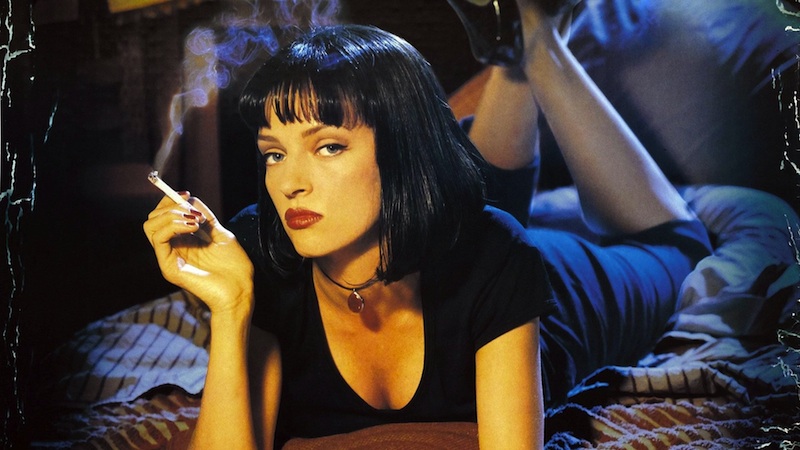
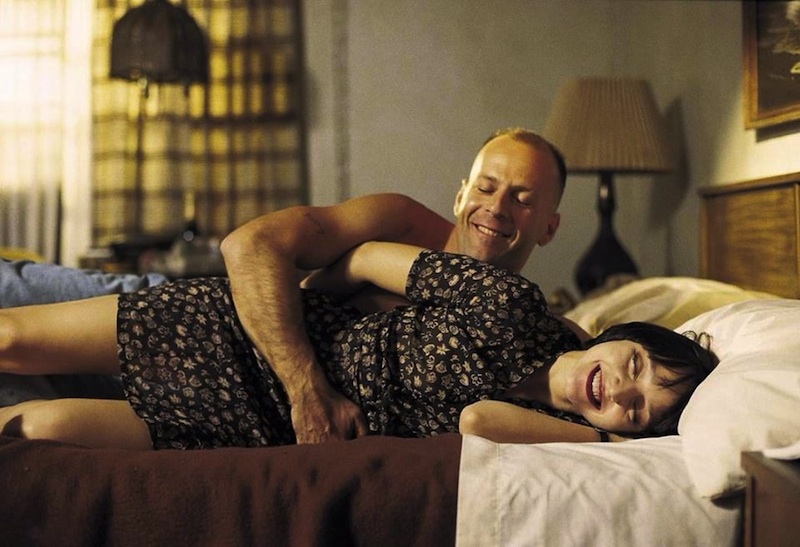
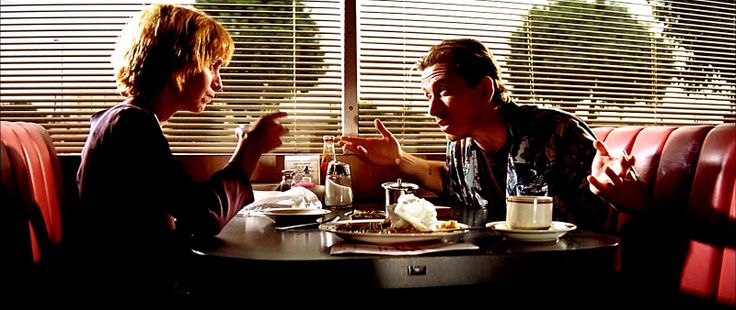
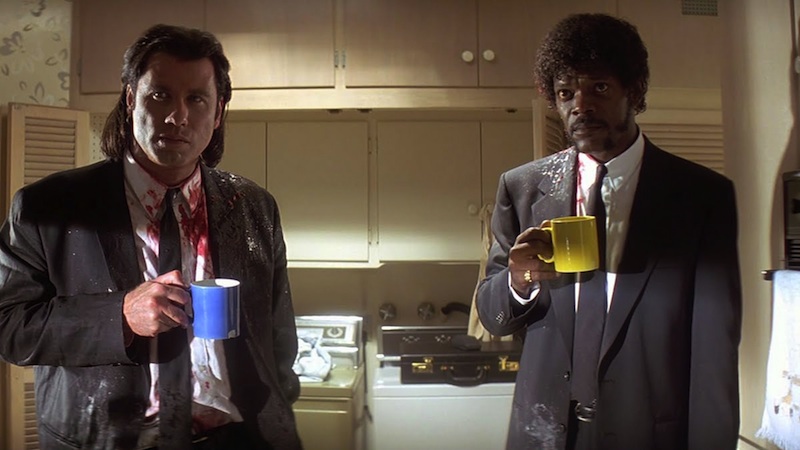
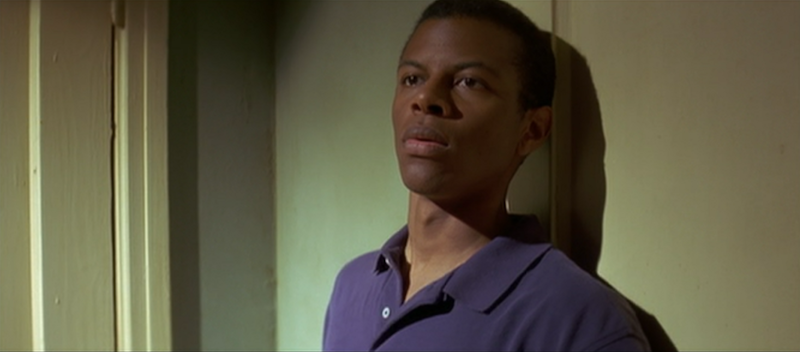
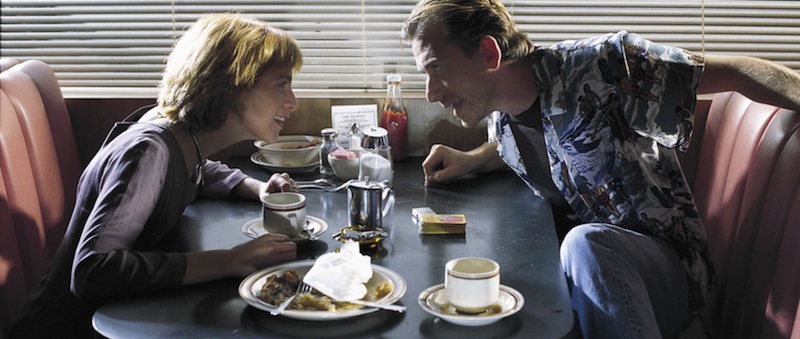
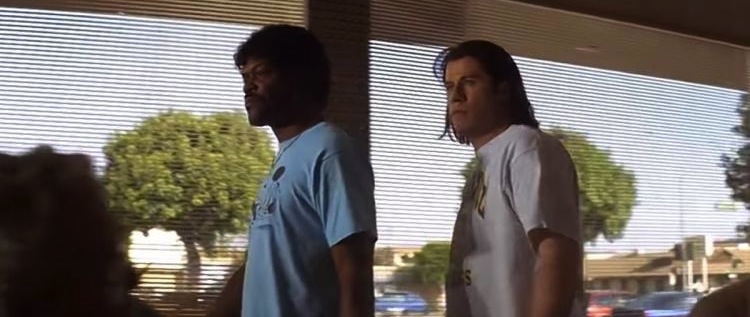
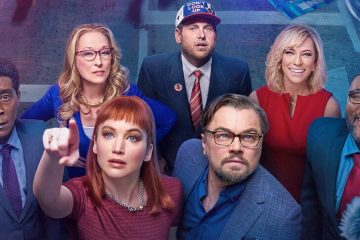

13 Comments
Anna · December 11, 2020 at 9:02 pm
I just always wanted to know where Jules and Vincent were going to take Marvin.
L · November 26, 2019 at 10:35 am
Very well written, I understood every bit of this movie after reading it. As I regularly watch japanese animation and read manga I decided to put my foot into the water of these types of movies which in a film makers stand point isnt much different in terms of narration. Anyone got recommendations similar to this movie? Id love to dig more into it
M · July 11, 2022 at 10:58 pm
Well they weren’t going to kill him (intentionally) or else they would have back at the apartment. Obviously Marvin was in on it since Jules knew him by name. One would have to assume they were either dropping him off somewhere or taking him to see Marsellus as they bring him the briefcase.
Brian R Davis · August 16, 2019 at 7:39 pm
The genius of Pulp Fiction isn’t hidden!
Aileen Delgado · August 5, 2019 at 8:57 pm
Amazing review. This is my first time ever viewing any Tarantino film (yes i am ashamed) ,and I must say that no other film maker within the industry has been able to leave me as conflicted as he has with this one film. His creative genius is exceptionally incomparable. The mix of his purposeful satire, along with his spontaneous use of plot order make for quite the responsive film.
Ben Sebastian · April 9, 2019 at 3:33 am
Keep up the good work !!!!
Mike L. · January 28, 2019 at 7:14 am
Well done! Not positive however if Jules is the protagonist. I believe he’s the villain who has a change of heart. Butch is the protagonist. The story is about a boxer who is paid by a gangster to throw a fight, but because of his family legacy of honor he does not throw the fight and bets on himself to win. This central story carries the entire picture.
Jules and Vincent are the ruthless killers who work for the gangster, these are the men our hero Butch is up against. The twist in the story is that jules has an epiphany, a life-changing experience which pulls him out of the killing business, so he was not there with Vincent in Butch’s apartment like he was supposed to be. If Jules didn’t have the epiphany, not only would the two silly robbers in the diner be dead as fried chicken, but so would Butch. Jules would have been there, ready to recite his bible passage and blow Butch away.
Wie Pulp Fiction meine Selbstliebe entfachte - Devocean Pictures · August 9, 2022 at 8:38 am
[…] Quotes Pulp Fiction 1994 Auch wenn Fabienne selbst mit sich unzufrieden war, hat ihre Sicht in „Pulp Fiction“ meine Selbstliebe entfacht, zumal es ihr egal war, was die Männer von einem Kugelbauch hielten. Sie wollte ihn, weil sie selbst ihn sexy fand! (Danke für das Bild) […]
Best Websites and Resources for Writers: 2020 - The Art of Narrative · January 3, 2021 at 10:18 pm
[…] novels. He’s written one of the most interesting and thorough explanations of the plot of Pulp Fiction ever. He also writes frequently on how sociology affects story-telling. And, he has a ton of […]
Music and the Fictive Dream – Elle's Irie Vibes · November 16, 2020 at 2:12 am
[…] Kownacki, Justin. “The Real Hidden Genius of Pulp Fiction.” Justin Kownacki, 1 Nov. 2020, http://www.justinkownacki.com/the-real-hidden-genius-of-pulp-fiction/. […]
Top 5 Cult Classics - Manage By Walking Around · November 15, 2020 at 4:44 pm
[…] stories told out of order. The most violent film on this list but it’s really about the choices people make regarding life and death, honor and disgrace, and the vagaries of […]
Exploring Nonlinear Narratives - The Art of Narrative · July 7, 2019 at 5:56 pm
[…] The Real Hidden Genius of Pulp Fiction […]
Pulp Fiction: Understood or Misread? – JsFilms · March 24, 2018 at 12:54 pm
[…] http://www.justinkownacki.com/the-real-hidden-genius-of-pulp-fiction/ […]